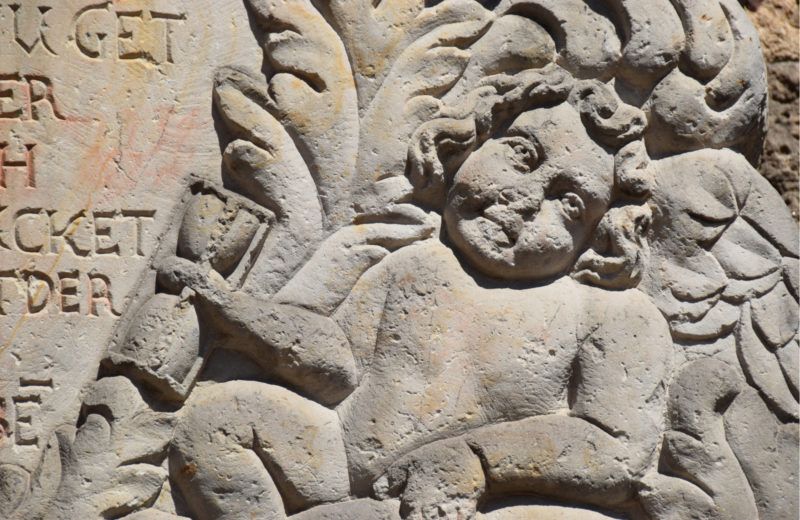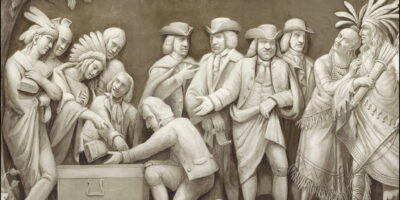The 1619 Project: An Epitaph

It took six months of heated debate to reach this point, but the New York Times’ 1619 Project has finally offered a small but crucial concession to its critics. On March 11, the paper published an “update” to indicate that it would be changing a disputed line of text in the lead essay by Nikole Hannah-Jones. The change concerns one of the more visible points of contention from the preceding months.
As originally framed, the 1619 Project depicted the preservation of slavery against a British emancipatory threat as a central motivating factor for the American Revolution. They are now relaxing that claim to suggest that preserving slavery was a motive for only “some of the colonists.”
The Times’ correction comes across as a minor edit on paper, but behind those two altered words is a stunning concession. Over the previous six months, Hannah-Jones maintained an unyielding hold to her original essay’s claim and did so under intense scrutiny from experts on the subject. The assignment of primacy to slavery as a revolutionary cause became a focal point of a letter by five leading historians to the Times calling on the paper to issue a correction, which prompted a dismissive reaction back in December from both Hannah-Jones and the magazine’s editor, Jake Silverstein.
Much of the contention focused upon a late 1775 attempt by Lord Dunmore, the British governor of Virginia, who moved to preserve his rule by drawing the slaves of rebellious colonists into his militia in exchange for their freedom.
The Dunmore Proclamation revealed one of the many ways in which slavery cut across the other dividing lines of the revolutionary period, but it did not portend a coming general emancipation from the Crown. Indeed, most slave-owning colonists perceived the measure as an attempt to incite a slave revolt against opponents of the British rule, rather than a sign of slavery’s weakening position. The proclamation conveniently exempted the slaves of loyalist plantation owners, and Dunmore himself left a sordid record as supporter and beneficiary of slavery in the British colonial system. Meanwhile, as the long fight to abolish the institution made all too clear, supporters of slavery maintained firm majorities in the British Parliament at the time – and would continue in power for several decades to come.
Most of the problems with this key point in the 1619 Project’s narrative appear to have stemmed from the way that Hannah-Jones went about researching and preparing her collection of essays. While the New York Times Magazine feature emerged under the consultation of several expert scholars in other areas of the 400-year swath of American history under its scope, it used very few specialists in the period between the American Revolution and the Civil War – arguably the most crucial period for the study of slavery in the United States.
Instead, Hannah-Jones took on this subject herself or assigned specific themes from this period to non-experts, such as Princeton sociologist Matthew Desmond who wrote an accompanying piece on the economics of slavery despite having no scholarly competencies in that subject.
The results have made the period of 1775 to 1865 an acute vulnerability for the 1619 Project, even as the remainder of the initiative has faced far less criticism. At this point it would be accurate to conclude that the reputation of the project’s other essays, many of them entirely unobjectionable adaptations of scholarly insights for a popular audience, has suffered because of the Times’ inflexible refusal to address erroneous historical claims in the essays by Hannah-Jones and Desmond.
When specialists in the 1775-1865 period began to scrutinize the Times’ claims about this period, they quickly identified multiple glaring errors of fact and interpretation alike. Hannah-Jones had grossly exaggerated the Dunmore Proclamation and misinterpreted its political ramifications to the revolution, ahistorically recasting the British as something of an existential threat to American slavery. In similar fashion, Desmond botched several basic facts about the economic history of slavery. He severely overstated the economic significance of cotton to industrialization, while also misreading and misrepresenting evidence he enlisted to argue that the plantation economy stains and discredits modern American capitalism.
While the Times has thus far evaded scrutiny of Desmond’s claims, Hannah-Jones began casting about after the fact for scholars who would lend credence to her elevation of slavery to preeminence among the motives behind the Declaration of Independence.
In time she was able to cherry-pick an eclectic literature from a handful of historians that assign more emphasis to the effects of Dunmore’s act on the revolutionary cause. However, as Cathy Young documents, most of these scholars assert much more tempered variants of this thesis under heavy qualifiers that were absent from Hannah-Jones’s own depiction, and the few who do not offer arguments that collapse under evidentiary scrutiny.
At the same time, Hannah-Jones’s own response to her scholarly critics devolved from an initial respectful engagement to aggressive derision. She attacked the scholarly credentials of James McPherson and Gordon Wood, two of the most famous historians to question her narrative. In one perplexing tweet, she singled out the critics as “white historians” (oddly neglecting the lack of racial diversity among the scholars who advised Desmond’s own 1619 Project contribution). When a group of conservative African-American academics and journalists launched a competing “1776 Project” in early 2020 to offer a counternarrative, Hannah-Jones bombarded them with a string of personal attacks, the gist of which amounted to declaring them unworthy of her attention.
From Silverstein’s rebuff of the essay’s historian critics to Hannah-Jones’s dismissive and insulting demeanor, the message was clear. The Times would not be amending its content, even to account for substantive evidence-based criticism of its factual and interpretive mistakes. This inflexible stance even extended to clearly documented errors, such as Hannah-Jones’s misuse of the Dunmore Proclamation. When I directed Silverstein to a line in Desmond’s essay that specifically contradicted its own cited source by imparting a slavery-based origin story to modern Microsoft Excel spreadsheets, he similarly declined to offer any correction or clarification. The paper’s commitment to its published claims remained inflexible, no matter the error. Scholarly assessments of the project itself were unwelcome, unless they offered support to the 1619 Project’s preexisting narrative.
So what brought about the Times’ sudden, if underplayed, reversal?
On March 6, 2020, Politico published a surprise essay by historian Leslie M. Harris that upended the 1619 Project debate. Although its author chided some of the historian-critics of the project for allegedly understating slavery in their own work, she also had a stunning revelation about Hannah-Jones’s essay.
The previous summer Harris had been contacted by the Times to serve as a fact-checker on the 1619 Project’s discussions of slavery, one of her areas of specialization. The newspaper had asked her to verify the following claim:
One critical reason that the colonists declared their independence from Britain was because they wanted to protect the institution of slavery in the colonies, which had produced tremendous wealth. At the time there were growing calls to abolish slavery throughout the British Empire, which would have badly damaged the economies of colonies in both North and South.
In Harris’s own words, “I vigorously disputed the claim. Although slavery was certainly an issue in the American Revolution, the protection of slavery was not one of the main reasons the 13 Colonies went to war.” The Times’ editors ignored her warning and ran with Hannah-Jones’s argument anyway.
It took less than a week for the Times to migrate from its previous steadfast defense of the claim to the concession noted at the outset of this essay. Even then, the concession remains understated.
The newspaper’s peculiar wording attempted to chalk the confusion up to interpretive ambiguities by its readers. In Silverstein’s words, the Times recognized “that our original language could be read to suggest that protecting slavery was a primary motivation for all of the colonists. The passage has been changed to make clear that this was a primary motivation for some of the colonists.”
Contrast that with the original passage, which stated, “Conveniently left out of our Founding mythology is the fact that one of the primary reasons the colonists decided to declare their independence from Britain was because they wanted to protect the institution of slavery.”
There is no issue where the passage “could be read to suggest” an erroneous historical claim. It made that claim outright in unambiguous language that Hannah-Jones subsequently doubled down upon and, until the correction, showed few signs of ever relaxing or qualifying.
Still, the concession revealed more than its guarded conciliatory language displayed. Although they are conspicuously unacknowledged in Silverstein’s correction note, the critics of the 1619 Project were on solid ground to question this claim and did so when it first appeared in print over six months earlier. The Times, in turn, behaved atrociously in deflecting and denying a substantive scholarly challenge to its content until its hand was forced.
Thus we’re left with “could be read to suggest.” That tepid backtracking, in effect, gave away the game. It’s a fitting epitaph to what could have been an important and provocative contribution to historical inquiry about the lasting harms of slavery in the United States, but instead veered down the path of an ideological project, consumed by maintaining its own 21st-century political narrative above the history it weaponized to that cause.










